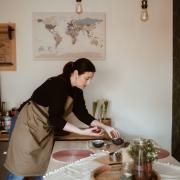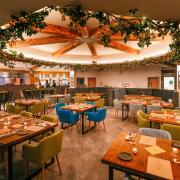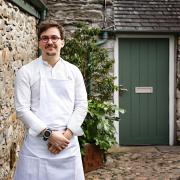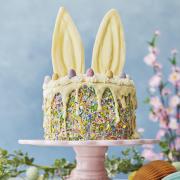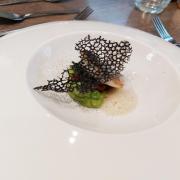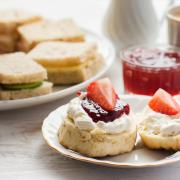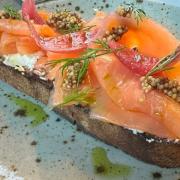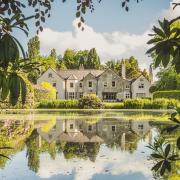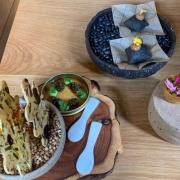Celebration and over-indulgence at this time of year are nothing new – try these historic recipes to see what the hosts of Christmas past would have served
Contrary to popular opinion, Charles Dickens did not invent Christmas. While our pagan ancestors commemorated the winter solstice in recognition of lighter days ahead, the word Christmas as a Christian religious celebration, was formally acknowledged in the 11th century, combined with ancient Yuletide festivities. A merry old time was had by all, as houses were decorated with winter greenery, honouring new life and people entertained themselves with feasts, dancing, drinking and plenty of games.
In the royal court a specially appointed official, known as the Lord of Misrule, managed the Christmas festivities, a sort of mischievous party planner who wreaked chaos by putting on shows and inciting rebellious behaviour.
Poorer communities made do with foods like cheese, bread, eggs, pickles, nuts, berries and porridge and small gifts were exchanged on Twelfth Night, or January 6.
Christmas food eaten in the big, wealthy households of Lancashire would have included peacock, most probably skinned, cooked on a spit, and then redressed in its feathers to dazzle guests, while the Christmas centrepiece was likely to have been a boar’s head. Roast potatoes were not a traditional medieval pairing with meat, but winter cabbages would have featured on the Christmas table, boiled in broth, and seasoned with saffron and salt.

There would also have been a steady supply of large pies, each shaped like its their contents – rabbit or pig, maybe – and pies filled with fruit, shredded meat and spices sometimes known as shred or Christmas pies.
Pottage, frumenty and figgy pudding were all medieval names for what is now known as the Christmas pudding. Grains soaked in water and boiled have many historical variations, with dried fruits, spices, almonds and even wine added as England began to import more non-essential items from overseas.
From these simple dishes which were enjoyed by all communities during a range of feasts and festivities throughout the year, emerged the plum pudding, plum being any type of generic dried fruit. By the 1700s, a ‘Christmas plum porridge’ was widely referenced and sometimes boiled in a skin, but the medieval version was more like a thick soup.
The Liber Cure Cocorum is a culinary manuscript frequently attributed to Lancashire, dating to the 1400s. The following recipe for Fig Pudding translated by Cindy Renfrow, which is more of a sop (bread soaked in liquid), than a porridge provides a good example:
For thick fignade (fig pudding).
First boil your water with honey and salt,
Grind blanched almonds I know you shall;
Through a strainer you shall strain them,
With the same water that is so clean.
In some of the water you shall steep
White bread crusts to bind it withal;
Then take figs and grind them well,
Put them in [a] pot so have you bliss;
Then take bread, strain it with milk
Of almonds that is white and clean;
Cast in the figs that are ground
With powder of pepper that is the kind,
And powder of cinnamon; in great lord's house
With sugar or honey you may sweeten it;
Then take almonds cloven in twain,
That are fried with oil, and set with will
Your dish, and garnish it you might
With powder of ginger that is so bright,
And serve it forth as I spoke then
And set it in hall before [good men].

One dish that spanned all classes was blood or black pudding, with a heritage that extends to the Roman era, blood and entrails were mixed with anything from grains to onions, herbs and spices and stuffed into an intestine before being boiled. Although it cannot boast ownership, Bury has a long relationship with this dish which would undoubtedly have been enjoyed around the tables of both medieval nobles and the poor. Hackin or Hack pudding has also been referenced as a dish once regularly eaten on Christmas morning in Lancashire. Think of it as a sweet haggis made with milk-soaked oatmeal, meat, dried fruit, beaten eggs and spices.
Thirsty medieval revellers were likely to over-celebrate at Christmas – a lesson not everyone has learned in the years since.
Braggot, braket or bragot was a medieval beverage often historically connected with Lancashire, which, like many other specialist ales, would have been enjoyed at Christmas. It was made by fermenting honey and ale together, or ale was simply flavoured with honey and spices. Braggot is referenced as early as 1386 in Chaucer’s Miller’s Tale and can be found in many medieval cookery books like this one from the early 1500s.
For Braket.
Take a pott of good ale and put therto a porcion of hony and peper in this maner, when thou hast good ale let it stone in a pot ij. Daies and thā drawe out a quarte or a potell of that ale and put to the hony and set it ouer the fire and lete it seethe well and take it of the fire and scinne it clene and than put thertoo the peper and thē set hē on the fire and lete hem boyle wel togedur with esy fir; but peper take iiij. gallons of good ale a pynte of fyn tried hony and the mountenaunce off saucer full of poud’ of pepper, &ct.

The author: Emma Kay is a food historian, writer and broadcaster who appeared in Lancashire Life earlier this year when her book Foots, Lonks and Wet Nellies: Lancashire's Food and Drink came out. She lives in the Cotswolds, but her husband is from Freckleton. She said: ‘My family and I are looking forward to heading to Lancashire for our annual Christmas and New Year visit to sample all of its culinary delights from cheese to Chorley cakes, potted shrimp, and pie, before taking in the greatest free light show on earth.’





